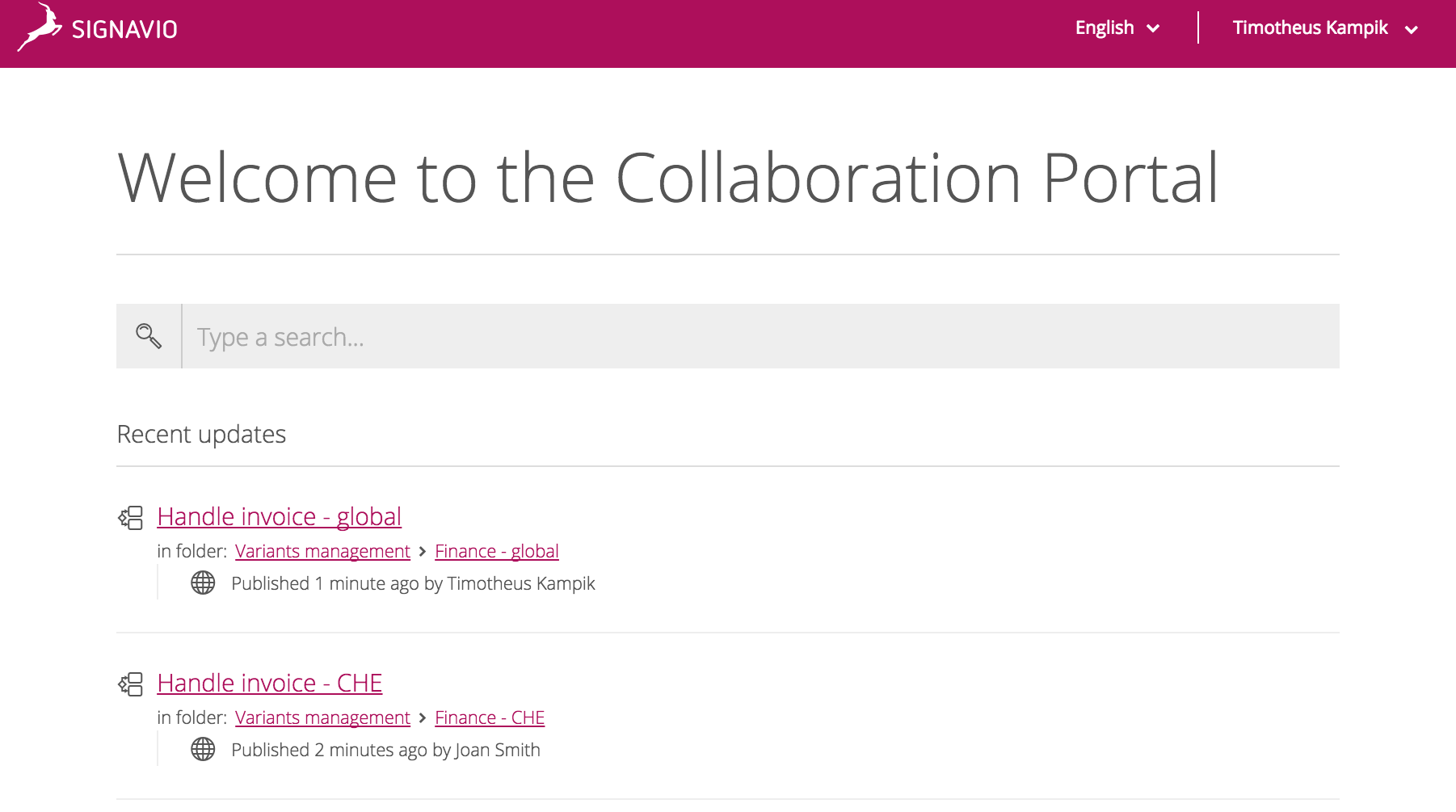When expert-only BPM fails
Let’s briefly take a look at an example scenario.
Joan just started as a process consultant in a medium-sized services company. Management decided to assign her to a small team to form a BPM Center of Excellence, and instructs the team to address a number of apparent, but not precisely specified, performance and quality issues. To ensure management gets what it wants, Joan and her team organize the process management initiative top-down in the following steps:
- First, the team of BPM experts scans the company’s intranet for documents that provide insight into the corresponding processes.
- Additional information is gathered in short, one-time interviews with process participants.
- The findings are documented in a business process management system. Because management regards business process documentation as an expert-only task, only members of the BPM CoE have access.
- Joan and her expert team identify improvement opportunities, and discuss them in a brief presentation with management.
- The approved improvement suggestions are implemented. First, the IT department prepares the necessary system updates. Then, management attempts to enforce the necessary organizational changes.
Already when documenting the first processes, Joan and her team encounter problems. Employees are hesitant to provide information on how processes run exactly, as well as on the motivation behind specific process steps. Process participants provide the impression that they either don’t care about the process management efforts (‘management nonsense’), or they are afraid the initiative will result in budget cuts and layoffs. Moreover, they feel that their own needs and improvement ideas are being ignored or regarded as low priority.
Consequently, they are not motivated to provide accurate insights into the actual current state processes.
Later on, when implementing the future state processes, further issues bring the process management initiative to a halt. In many cases, process participants assess the newly designed future state processes as impractical. Other employees try to run the new processes but find out that the newly implemented IT systems only support the happy paths of processes and complex cases like escalations cause chaos and require highly inefficient workarounds.
Finally, the first customers start to be dissatisfied with the low level of service and cancel their subscriptions.
Spreading process awareness and engaging employees with collaborative BPM
To bring the process management initiative back on track, Joan and her team adjust their approach to better engage process participants and subject matter experts.
To gain the support of all employees, they set up workshops to outline the motivation of the business process improvement initiative and to explain how the whole company can contribute to and benefit from process improvement.
During the process design phase, internal process participants - for example clerks - are continuously involved to ensure process models don’t deviate from reality without reason.
Both modeling style and subject matter correctness are ensured through approval workflow software.
When the BPM expert team identifies potential for process improvement, it re-checks with domain experts that the changed processes can actually work in reality. Once a process is ready to be rolled out, it is published in the Signavio Collaboration Portal that offers an intuitive view of the whole process landscape and a commenting feature to facilitate process feedback. Jane asks the IT department to integrate the Collaboration Portal into the company’s intranet. Now, a process appears together with the pages the corresponding users open as part of their normal working days. In this way, the Collaboration Portal turns passive process participants into active BPMS users.
The BPM experts assess the user’s concerns and needs, and work-in constructive feedback. Particularly involved users are upgraded to have access to the Process Editor and can take responsibility for a set of processes within their department.
Via the Collaboration Portal’s news feed, all users get an overview over the most recent changes to the process landscape at a glance.
With collaborative BPM, all employees are aware of the process improvement initiative and most of them support BPM as a method for continuously improving their professional lives. After a while, the process-owning departments start driving the process improvement efforts, whereas the BPM CoE is merely acting as a team of coordinators and architects of the overall process landscape.
Conclusion: Collaborative BPM
Involving a team of BPM experts in your process initiative is typically not sufficient for your BPM initiative to create the desired business benefits.
To really live BPM, and to support agility and continuous improvement in operations, all process participants need to be process-aware, and feel responsible and empowered to contribute to continuous improvement efforts.
Collaborative BPM with the Signavio Collaboration Portal helps you achieve process awareness and invites people to provide process feedback and improvement suggestions.
To try the Signavio Collaboration Portal, sign up for a free 30 day trial or contact sales for a quote.



